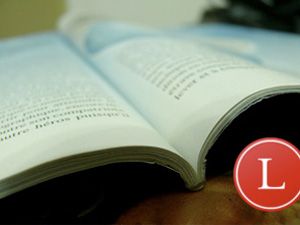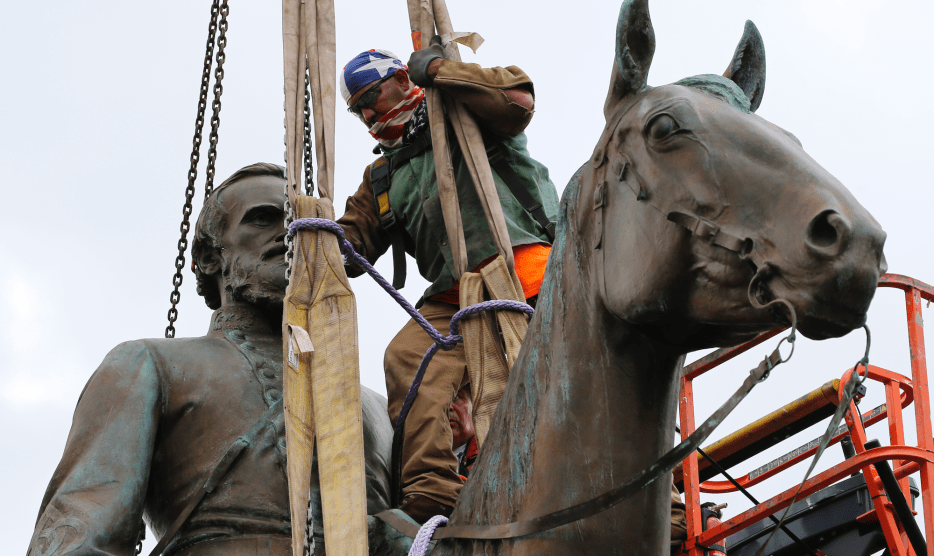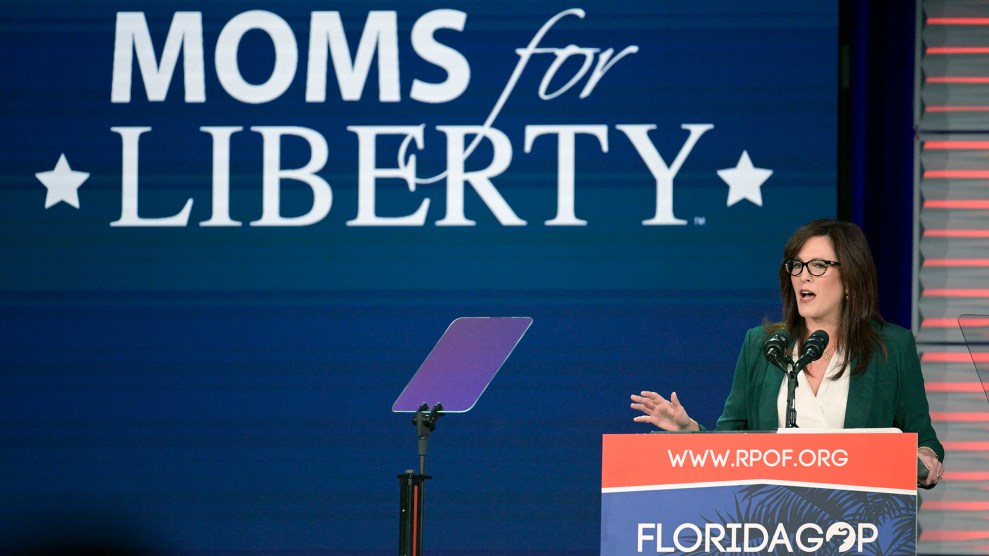
Mother Jones guest blogger Mark Armstrong is the founder of Longreads, a site devoted to uncovering the best long-form nonfiction articles available online. And what better time to curl up with a great read than over the weekend? Below, a hand-picked bouquet of five interesting stories, including word count and approximate reading time. (Readers can also subscribe to The Top 5 Longreads of the Week by clicking here.)
1. Partners | Jeffrey Toobin | The New Yorker | Aug. 29, 2011 | (9,173 words)
Clarence Thomas has been a silent, but strong, leader of the Supreme Court’s conservative wing, and “is probably the most conservative Justice to serve on the Court since the nineteen-thirties.” His wife Ginni Thomas’s outspoken views against Obama and health-care reform raise questions about whether Thomas should recuse himself if and when the law comes up for review:
“Still, the controversy over Ginni’s work has already taken a toll on Justice Thomas, as he made clear in an emotional appearance at a Federalist Society event at the University of Virginia School of Law, in February. ‘This is about our country, and one of the things I want to do is I want to go to my grave knowing that I gave everything I have to trying to get it right. And all I ask of you all, especially those of you who are still in school, is you give it your best,’ Thomas said, in remarks first reported by Politico. ‘I watch my bride who, in doing the same things, when she started her organization, she gives it 24/7 every day, in defense of liberty. You know, and maybe that’s why we’re equally young and we love being with each other because we love the same things; we believe in the same things. So, with my wife and the people around me what I see unreinforced is that we are focused on defending liberty. So, I admire her and I love her for that because it keeps me going.’ Then, concluding his speech, he said, ‘My bride is with me, Virginia Thomas, and some of you may know her. But the reason that I specifically bring it up: there is a price to pay today for standing in defense of your Constitution.'”
See also: “On the Death Sentence” (John Paul Stevens, New York Review of Books, Nov. 2010)
2. Why Are Finland’s Schools Successful? | LynNell Hancock | Smithsonian | Aug. 18, 2011 | 14 minutes (3,515 words)
Close examination of how Finland transformed its education system over 40 years, from one that only served a privileged or lucky few, to the one of the best in the world:
“In 1963, the Finnish Parliament made the bold decision to choose public education as its best shot at economic recovery. ‘I call this the Big Dream of Finnish education,’ said Sahlberg, whose upcoming book, Finnish Lessons, is scheduled for release in October. ‘It was simply the idea that every child would have a very good public school. If we want to be competitive, we need to educate everybody. It all came out of a need to survive.’
“Practically speaking—and Finns are nothing if not practical—the decision meant that goal would not be allowed to dissipate into rhetoric. Lawmakers landed on a deceptively simple plan that formed the foundation for everything to come. Public schools would be organized into one system of comprehensive schools, or peruskoulu, for ages 7 through 16. Teachers from all over the nation contributed to a national curriculum that provided guidelines, not prescriptions. Besides Finnish and Swedish (the country’s second official language), children would learn a third language (English is a favorite) usually beginning at age 9. Resources were distributed equally. As the comprehensive schools improved, so did the upper secondary schools (grades 10 through 12). The second critical decision came in 1979, when reformers required that every teacher earn a fifth-year master’s degree in theory and practice at one of eight state universities—at state expense. From then on, teachers were effectively granted equal status with doctors and lawyers. Applicants began flooding teaching programs, not because the salaries were so high but because autonomy and respect made the job attractive.”
See also: “Diane Ravitch, the Anti-Rhee” (Dana Goldstein, Washington City Paper, June 2011)
3. Tell | Chris Heath | GQ | Aug. 25, 2011 | 34 minutes (8,563 words)
As the “Don’t Ask, Don’t Tell” era comes to an end, gay servicemen recount their experiences, some dating back to World War II.
“Chuck Schoen’s navy career flourished: ‘I was in an assembly team for nuclear weapons which took the top-secret clearance.’ But in 1963, when he was only months away from earning his pension, things went awry. ‘The commanding officer gave me the message that I was to report to the office of naval intelligence. I thought, “Oh, it’s them, they’ve got me.” ‘ They claimed that he had been named as a homosexual and pressured him to confirm the details, showing him photos of other men who were implicated. ‘Of course, I denied everything they asked me,’ he says. He has always considered what happened three months later to be entrapment. ‘An undercover cop, we had a few drinks at the bar and talked and so on. We went upstairs to his hotel room and, after we got started, he pulls a badge out.’ Another police officer had also been watching from the room next door. That same night, they released him to the navy, and it seemed clear to him that this whole chain of events had been instigated by navy investigators.
“‘I thought I should commit suicide,’ he remembers. ‘I was pretty depressed. You think of so many things.’ The next day the navy gave him a choice—he could either go through a court martial (it was suggested to him that he could get five years of military prison and hard labor for each offense) or accept an other-than-honorable discharge. So he agreed to the latter, even though he knew he would lose his pension.”
See also: “Bad Lieutenant, Dan Choi” (Steven Thrasher, Village Voice, Oct. 2010)
4. Anatomy of a Greenpoint Bike Accident | Camille Dodero | Village Voice | Aug. 17, 2011 | 14 minutes (3,691 words)
The feeling of helplessness that comes from a life-altering hit-and-run accident, and an inadequate police response:
“After being treated for five broken ribs and a broken nose at Bellevue Hospital, James slept by Michelle’s side, upright in a chair, for three days. Her skull was fractured. Her C-spine, the neck’s cervical vertebrae, was broken. Her lower left leg was shattered; the break was so severe that doctors couldn’t set the bones for a week. When the hospital relocated Michelle to a women’s floor and James had to leave, the Viacom employee returned to their Bushwick apartment and found a business card left by a 94th Precinct detective. He called the station immediately. The officer on the other end delivered miraculous news: The hit-and-run weapon had been found. ‘We were like, “Great, that’s amazing! This guy’s caught.” ‘
“Not exactly. What James didn’t realize is that even though the ditched car was found within 24 hours, a 1990 Nissan Maxima abandoned two blocks southeast of the accident scene, the police would never make any arrests. And that the detective assigned to the case would tell James, as the victim has consistently recalled for months, that the vehicle owner claimed he’d lost his keys at a local bar that same night and walked home—and that without an eyewitness putting him in the driver’s seat, there was nothing that could be done. When James or Michelle asked what drinking establishment the auto owner had patronized and whether the police had questioned anybody there or if there were any clues in the car, the officer would become dismissive. They eventually stopped calling. According to the official police complaint, the unidentified hit-and-run driver’s highest offense would be categorized a misdemeanor, which seemed preposterous, all things considered.”
See also: “Rage Against Your Machine” (Tom Vanderbilt, Outside, Feb. 2011)
5. ?uestlove: 15 Years | Ryan Dombal | Pitchfork | Aug. 19, 2011 | 16 minutes (4,102 words)
A hip-hop legend recalls the rise of the Roots, his changing expectations for what counts as “success” in the music business, and the time P. Diddy chewed him out after a concert:
“Keep in mind that this is on the heels of Biggie telling The Source how he had been the biggest Roots fan and took offense to our ‘What They Do’ video, which mocked Biggie’s ‘One More Chance’ video. Listen, I hate videos. I’m meticulous on everything from cover art, fonts, productions, mixing. But when it comes to videos, I just feel so defeated. I don’t pay attention. I slept most of the time they filmed ‘What They Do.’ I really didn’t have a clue that we were mocking Biggie. And when we saw the final product, we thought, ‘OK, that’s silly, go with it.’ [Biggie] didn’t like that one bit, boy. I felt horrible that he thought we were even coming at him like that.
“Back to the show—when I spotted Puffy, Q-Tip just happened to be within reach. Unbeknownst to all of us, Tip had invited Puff so that Puff could sign Mos to Bad Boy. Tip was the only artist that had one foot in the Soulquarian underground and one foot in the champagne rap that was going on at the time. He was the delegate. So anyway, Puff’s like, ‘Yo, I want a meeting now!’ We went backstage and Tip’s playing the role of Minister Farrakhan with me and Mos on the right, and Puffy on the left with his 14 hitmen. That’s when I realized how he came into power. It was basically hearing Puff go off like he does at the end of ‘My Downfall’ on Life After Death. Screamin’ it. He was like, ‘Let me tell you something, playboy. Big had nothing but love for y’all motherfuckers! And y’all shitted on him! Y’all shitted on my man!’ I thought we were in the principal’s office. And he just went on and on for an hour. Thirty minutes into it, I realized I wasn’t going to get killed. It was just strange.”
See also: “The Fresh Air Interview: Jay-Z” (Terry Gross, NPR)
Featured Longreader: Matthew Howard
Matthew is director of electronic publishing at The New York Review of Books.
“The best thing I read this week was an essay by the great film editor Walter Murch (The Conversation, The Godfather Part II, The English Patient).
“Here’s how I found it: A few weeks ago I picked up a copy of Secret Knowledge: Rediscovering the Lost Techniques of the Old Masters on the bargain table at Bookculture. This is the book in which David Hockney advances his controversial idea that artists from Van Eyck to Caravaggio to Ingres made extensive use of mirrors and lenses in their work, and that these optical devices led to a ‘new way of seeing’ that transformed the history of art. Whatever you make of his theory (not all were convinced) the book is a delight, both for the beautiful reproductions and for the quirky correspondence Hockney carried on with various art historians and scientists while trying to prove his hunch, which feels sort of like a cross between CSI and Pale Fire.
“Following this thread I went looking in The New Yorker archives for the piece Lawrence Weschler had written about Hockney’s investigations. (The two are longtime collaborators; we did an audio slideshow of Weschler talking about Hockney’s iPhone drawings on nybooks.com a couple years ago.) From there I went on to a lively interview with Weschler on The Rumpus where he mentions in passing an essay by Walter Murch and his mysterious ‘Law of Two-and-a-Half,’ which has to do with the point at which sound turns into noise. Murch’s book of conversations with Michael Ondaatje is one of the best things I’ve ever read on film, so I was pleased to find this brilliant piece on Transom, which in #longreads style I saved to Instapaper and read on my phone on the subway this week.
“What Hockney and Murch have in common, I suppose, is that they write as master practitioners of their arts. Hockney says he wants to show us what he is seeing; Murch helps us to listen to what he is hearing. (Or some of it anyway: he says there were 175 separate soundtracks for one section of Apocalypse Now.) ‘It can be complicated to be simple and simple to be complicated,’ he writes. ‘But sometimes it is just complicated to be complicated.'”
Dense Clarity – Clear Density | Walter Murch | Transom.org | April 1, 2005 | 26 minutes (6,460 words)













